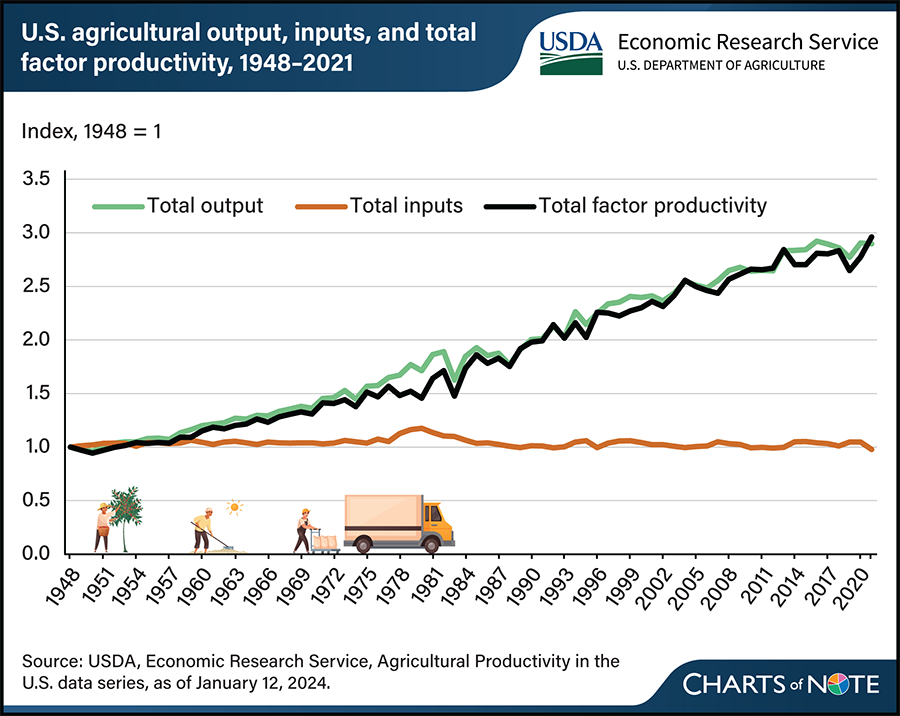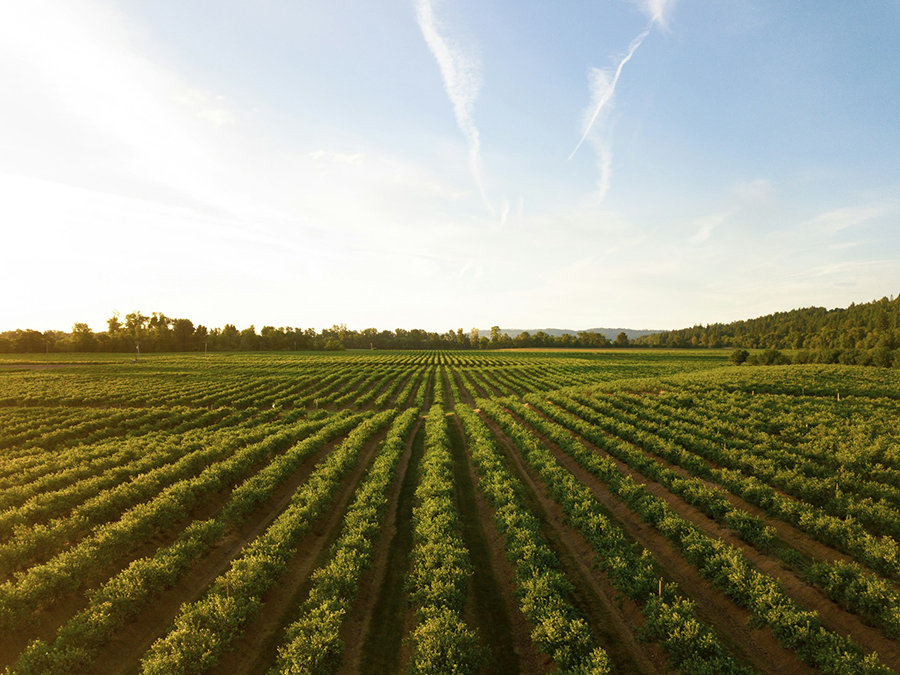U.S. farm output grew by 190% between 1948 and 2021 while inputs decreased, thanks to biotech and other technologies, according to recent figures from the U.S. Department of Agriculture (USDA).
“Innovations in animal and crop genetics, chemicals, equipment, and farm organization have made it possible for total agricultural output to nearly triple between 1948 and 2021,” USDA says.
A simple chart, compiled by the USDA Economic Research Service (ERS) and published Feb. 13 makes the story of increased productivity clear:

The data from the chart comes from a recently updated USDA ERS report on agricultural productivity in the United States, which finds the increase in production is due to increased “total factor productivity (TFP),” a measure of the use of all inputs to the production process.
According to that report, growth in farm sector output between 1948-2021 “was entirely attributed to total factor productivity growth, which increased at an annual average rate of 1.49 percent over the full period.”
Biotech’s contribution
When describing biotech’s contribution to greater farm productivity, the USDA’s ERS gives particular attention to genetically engineered (GE) seed varieties.
“Though GE seeds tend to be more expensive than conventional ones, planting them tends to increase crop yields, lower pesticide costs, and/or provide time and labor savings,” ERS says.
“Although other GE traits have been developed (such as virus and fungus resistance, drought resistance, and enhanced protein, oil, or vitamin content),” the most common kinds of GE seeds are herbicide tolerant (HT) and crops containing a gene from the soil bacterium Bacillus thuringiensis (Bt) to produce an insecticidal protein, ERS notes.
The HT crops reduce the amount of weeding and tilling necessary, and the Bt crops reduce the need for insecticide, so inputs decrease while the better-protected crops are more productive, ERS says. Other traits enhanced with GE seeds similarly help boost productivity and reduce inputs.
A report by ERS notes the specific benefits of GE seeds for corn in the United States.
“New seed technologies helped increase corn production in several ways. Farmers were able to plant corn seed more densely and earlier in the growing season. In addition, producers expanded corn acreage as pest resistance and drought tolerance allowed for profitable production in previously challenging regions,” the report says. “Genetically engineered seeds led to changes in other production practices as well. For example, increased use of drought-tolerant seed has coincided with a slight decline in irrigated acreage, and greater use of insect-resistant seed with changes in chemical applications.”




